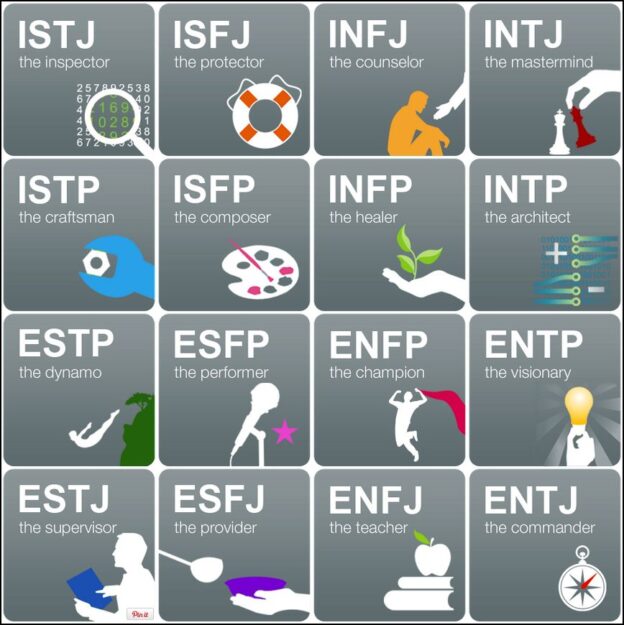The Myers-Briggs Type Indicator (MBTI) is a widely used personality assessment tool based on Carl Jung’s theory of psychological types. Developed by Katharine Cook Briggs and her daughter, Isabel Briggs Myers, the MBTI classifies individuals into one of 16 personality types based on four dichotomies:
This article was inspired by my time on the National Cyber Security Centre‘s NCSC for Startups accelerator programme on behalf of Cyber Tzar.
Overview
The MBTI is organised into the following Axis.
- Extraversion (E) / Introversion (I): This dichotomy relates to how individuals direct their energy and where they draw it from, either externally (Extraversion) or internally (Introversion).
- Sensing (S) / Intuition (N): This concerns how people gather information. Sensing individuals focus on present realities and tangible data, while Intuitive individuals lean towards future possibilities and abstract concepts.
- Thinking (T) / Feeling (F): This addresses how decisions are made. Thinkers make decisions based on logic and objective analysis, while Feelers prioritize emotions and values.
- Judging (J) / Perceiving (P): This pertains to one’s approach to the external world. Judging types prefer structure and set plans, while Perceptive types are more spontaneous and adaptable.
The 16 Personality Types:
- ISTJ (Inspector): Practical, fact-minded, and reliable. They enjoy order and structure, valuing tradition and loyalty.
- ISFJ (Protector): Warm, protective, and detail-oriented. They are committed to responsibilities and prioritize harmony.
- INFJ (Counselor): Visionary, insightful, and compassionate. They seek deeper meaning and are often drawn to help others.
- INTJ (Mastermind): Strategic, logical, and driven. They value knowledge and competence, often setting high standards for themselves.
- ISTP (Craftsman): Practical, observant, and adaptable. They excel at understanding systems and are hands-on problem solvers.
- ISFP (Composer): Sensitive, artistic, and flexible. They live in the present moment, valuing personal freedom.
- INFP (Healer): Idealistic, empathetic, and introspective. They are guided by values and seek harmony in their environment.
- INTP (Architect): Analytical, abstract thinkers who are independent and inventive. They are driven by a thirst for knowledge.
- ESTP (Dynamo): Energetic, pragmatic, and perceptive. They enjoy the thrill of the moment and are hands-on learners.
- ESFP (Performer): Enthusiastic, spontaneous, and fun-loving. They enjoy the spotlight and are very observant of their surroundings.
- ENFP (Champion): Warm, enthusiastic, and imaginative. They thrive on possibilities and are constantly seeking new challenges.
- ENTP (Inventor): Quick-witted, curious, and strategic. They love challenges and are excellent at reading people and situations.
- ESTJ (Supervisor): Organized, assertive, and pragmatic. They believe in clear structures and rules, leading with authority.
- ESFJ (Provider): Caring, social, and popular. They value harmony and community, often playing the role of caregivers.
- ENFJ (Teacher): Charismatic, passionate, and altruistic. They excel at guiding others and making connections.
- ENTJ (Commander): Bold, strategic, and assertive. They are natural leaders with a clear vision and drive.
In essence, the MBTI offers insights into individual preferences and tendencies. While widely used in various domains, it’s important to remember that each type merely provides a general overview, and individual variations will always exist.
